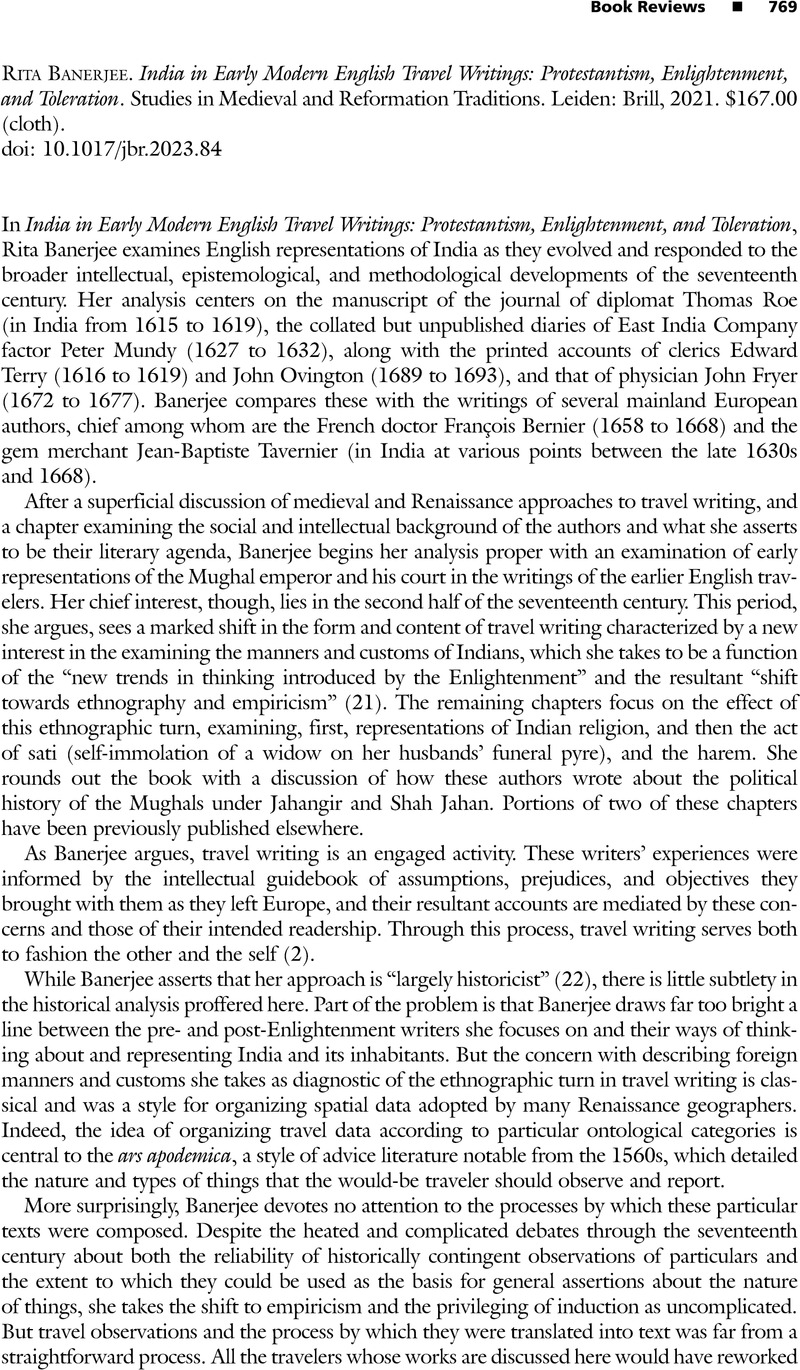No CrossRef data available.
Article contents
Rita Banerjee. India in Early Modern English Travel Writings: Protestantism, Enlightenment, and Toleration. Studies in Medieval and Reformation Traditions. Leiden: Brill, 2021. $167.00 (cloth).
Review products
Rita Banerjee. India in Early Modern English Travel Writings: Protestantism, Enlightenment, and Toleration. Studies in Medieval and Reformation Traditions. Leiden: Brill, 2021. $167.00 (cloth).
Published online by Cambridge University Press: 25 September 2023
Abstract
An abstract is not available for this content so a preview has been provided. Please use the Get access link above for information on how to access this content.

- Type
- Book Review
- Information
- Copyright
- Copyright © The Author(s), 2023. Published by Cambridge University Press on behalf of The North American Conference on British Studies



